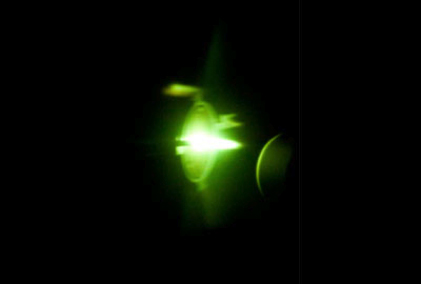Neutralize & Mitigate
Scientists are developing technologies designed to mitigate the effects of IEDs, protecting personnel and equipment from the detonation effects of these and other types of explosives.

Protecting personnel and equipment from the detonation effects
At Los Alamos, scientists are developing technologies designed to mitigate the effects of IEDs, protecting personnel and equipment from the detonation effects of these and other types of explosives.
Short for "improvised explosive device," an IED is a bomb assembled from military and commercially available materials.
Around since World War II, IEDs have become increasingly common. In Iraq, these devices caused 36.4 percent of American casualties. Insurgents not only used IEDs to target military personnel and vehicles, but also Iraqi police and civilian personnel, vehicles, and buildings.

Powder metallurgy at Los Alamos serves a range of customers, such as weapons, NASA, nuclear fuels, armor, anti-armor, and gas gun targets.
Technologies under development at Los Alamos include armor/blast-mitigation systems, including solid mass resistance (such as concrete bunker and steel plate), foam energy absorption (soap froth and compression panels), fracture energy adsorption (ceramics and sandbags), and composite structures (multifunctional layered structures); and reversible barriers that can resist chemicals and fire and withstand attacks from vehicles, battering rams, and infantry.
Research areas include the following:
- Airframe modeling
- Blast event shaping
- Detonation physics and chemistry
- Disruptive technologies
- Electromagnetic Energy (EME) coupling
- High-performance, multifunctional materials
- Shielding paradigms designed to protect personal from:
- Blast
- Fragmentation
- Thermal
- Threat scenario modeling


